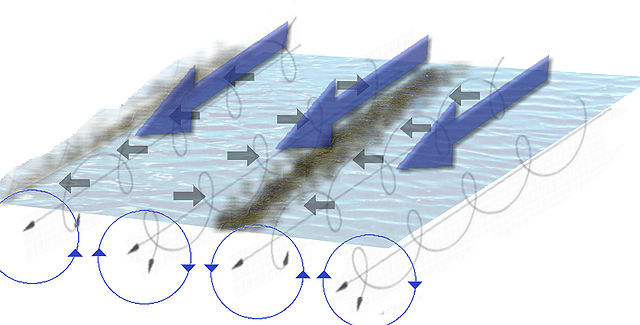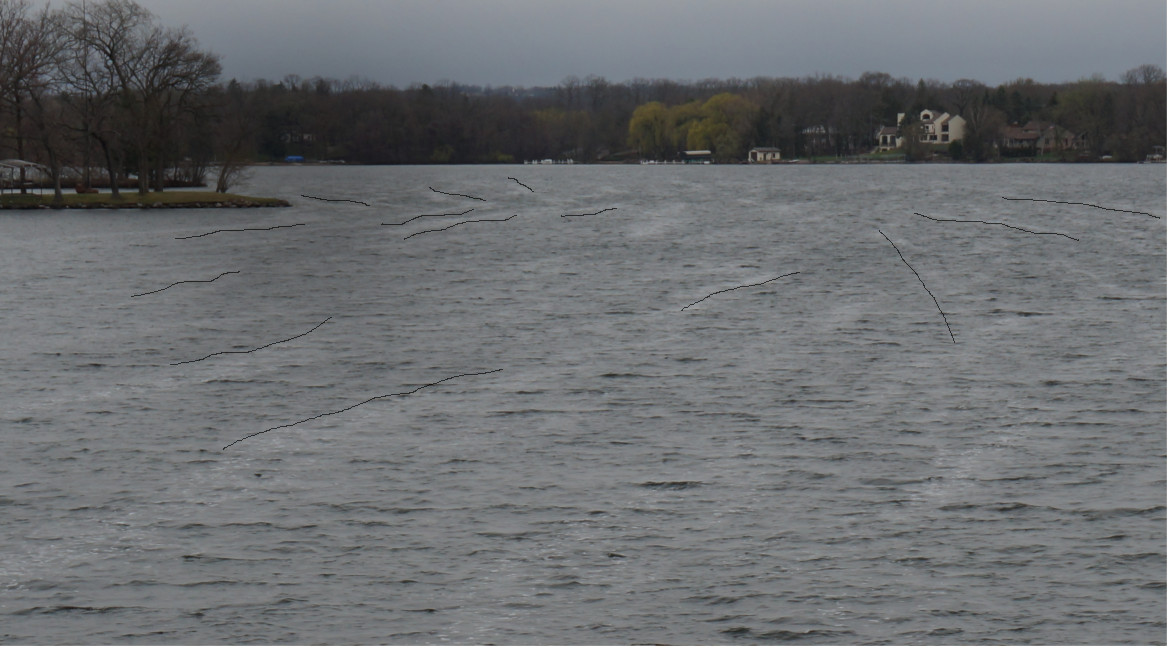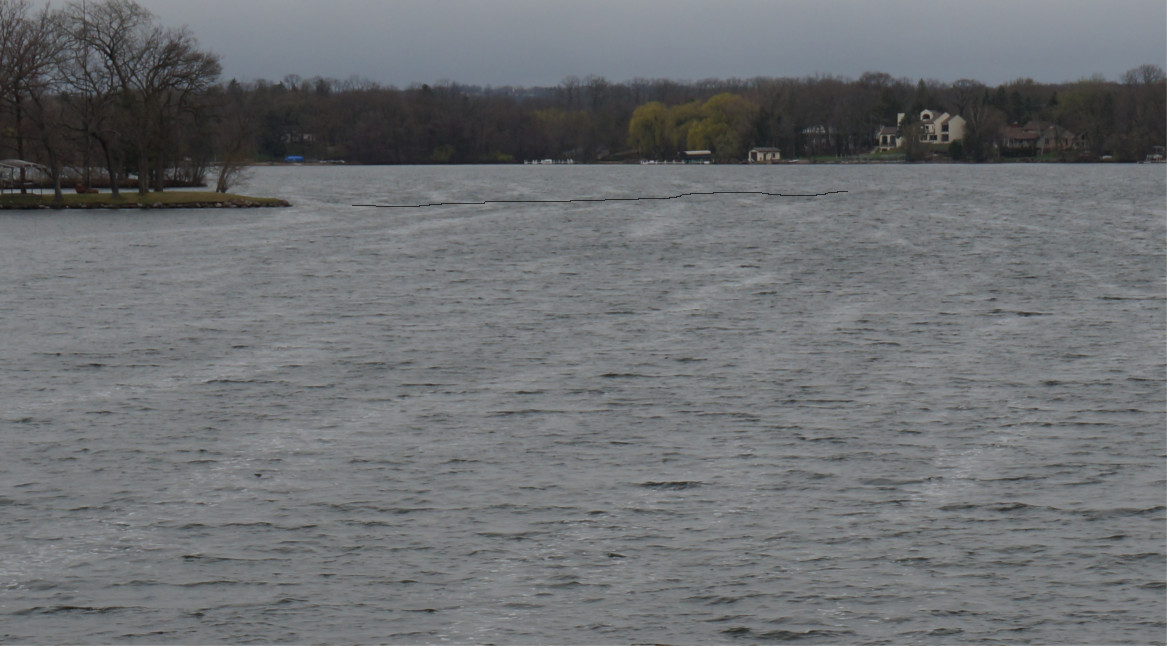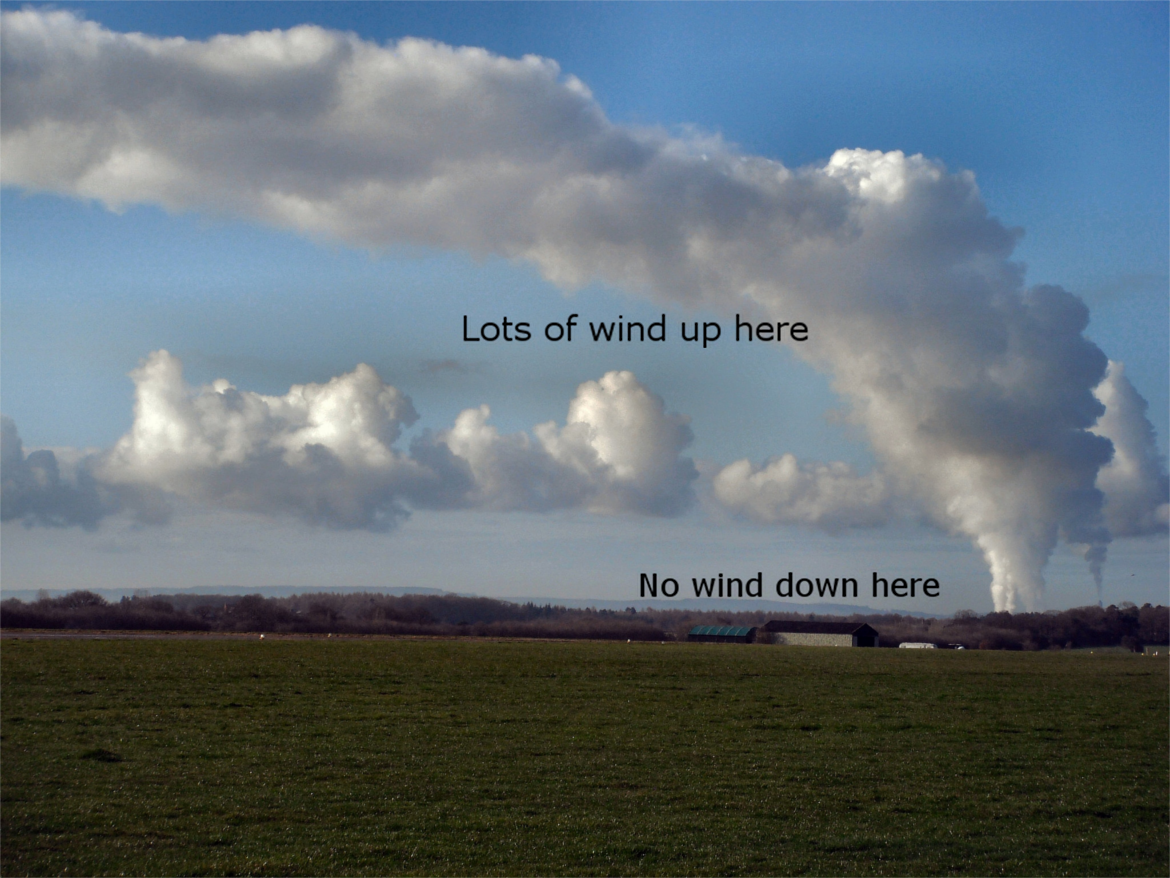Shiny streaks, or “wind lanes” appear between the darker areas. These indicate the direction of the approaching wind with absolute accuracy.
Frank Bethwaite in High Performance Sailing, Section 5.4
This statement in Bethwaite’s authoritative book peaked my interest. What sailor wouldn’t be interested in a visual cue that accurately shows you the wind direction? To learn more, I dug a little deeper into the causes of wind lanes and snapped some pictures of the gusty spring winds on Lake Beulah.
What I learned validates the usefulness of wind lanes, but throws doubt (gasp!) on some of Bethwaite’s statements.
Wind Lanes on Lake Beulah
The photo above was taken on a cool spring day, with the air warmer than the water. The wind was northeast at roughly 10 mph, with gusts to 15 or more. You can clearly see the wind lanes, which appear as calmer streaks. Later in the day, as the wind built, bubbles formed in the streaks, some of which turned into foam.
What Causes Wind Lanes?
Bethwaite’s explanation is brief. He says the faster portions of the turbulent wind scrub the surface and make the water darker. The slower portions leave the water “shinier” by comparison, and these are the wind lanes.
In Seeing Wind on the Water – Improve Your Skills, we referenced a very different explanation. We mentioned “streaks” of bubbles or calmer-looking water that are due to Langmuir circulation.

In Langmuir circulation, the wind causes the water to circulate in “tubes” roughly parallel to the wind direction. Adjacent tubes circulate in opposite directions. The shiny streaks are where the surface water is sinking between two rows of tubes. The sinking water collects bubbles and debris. Surprisingly, it also reduces the height of the surface waves.
After plowing through most of an article in the Journal of Fluid Mechanics (ugh!), I believe Bethwaite’s explanation is incorrect. The journal article confirms that the streaks are due to Langmuir circulation. The article is based on experiments in a wave pool, using temperature traces and motion sensors.
Do Wind Lanes Indicate Wind Direction?
Yes, but not with the absolute accuracy claimed by Bethwaite. Let’s study another Lake Beulah photo. In this photo I have sketched faint lines next to the wind lanes.

What’s striking about the photo is the ability to see geographic shifts. The wind clearly bends around the point of land on the left. Also, the wind direction diverges as it moves into the bay downwind of the point. If you were sailing upwind on starboard tack in this area, you would get progressively lifted. When you reached the point of land in the upper left, you would begin to get headed.
Is the wind direction “absolutely” indicated by the lanes, as Bethwaite claims? The answer is no, for two reasons.
- The wind lanes are not always in neat rows, and they sometimes cross over between adjacent rows. This is because the underlying “tubes” of circulation can be disrupted by surface waves and temperature variations.
- Several articles on Langmuir circulation note that even a neatly organized set of circulating rows can deviate from the wind direction by up to 20 degrees. This is due to the rotation of the earth (Coriolis force) and is more pronounced on bigger bodies of water.
Wind Lanes and Gusts
Wind lanes also don’t show you much about the direction of gusts. Take a look at the same photo, with an advancing gust highlighted.

If you look closely near the faint line, you may see that the lanes are still shiny and are unaffected by the direction of the gust. This is because the water circulation doesn’t change instantly in a gust – it takes roughly 20 seconds or more to develop initially in response to the wind, and then decays off slowly when the wind dies or changes. To see the direction of the gust, you have to watch the motion of the darker water.
When Do Wind Lanes Form?
According to the journal article and other sources, wind lanes can form in winds as low as 6-7 mph, but are more prevalent in higher winds. Their appearance is also temperature sensitive, since temperature influences the ability of the water to circulate. As wave heights build, turbulence may dissipate the lanes.





